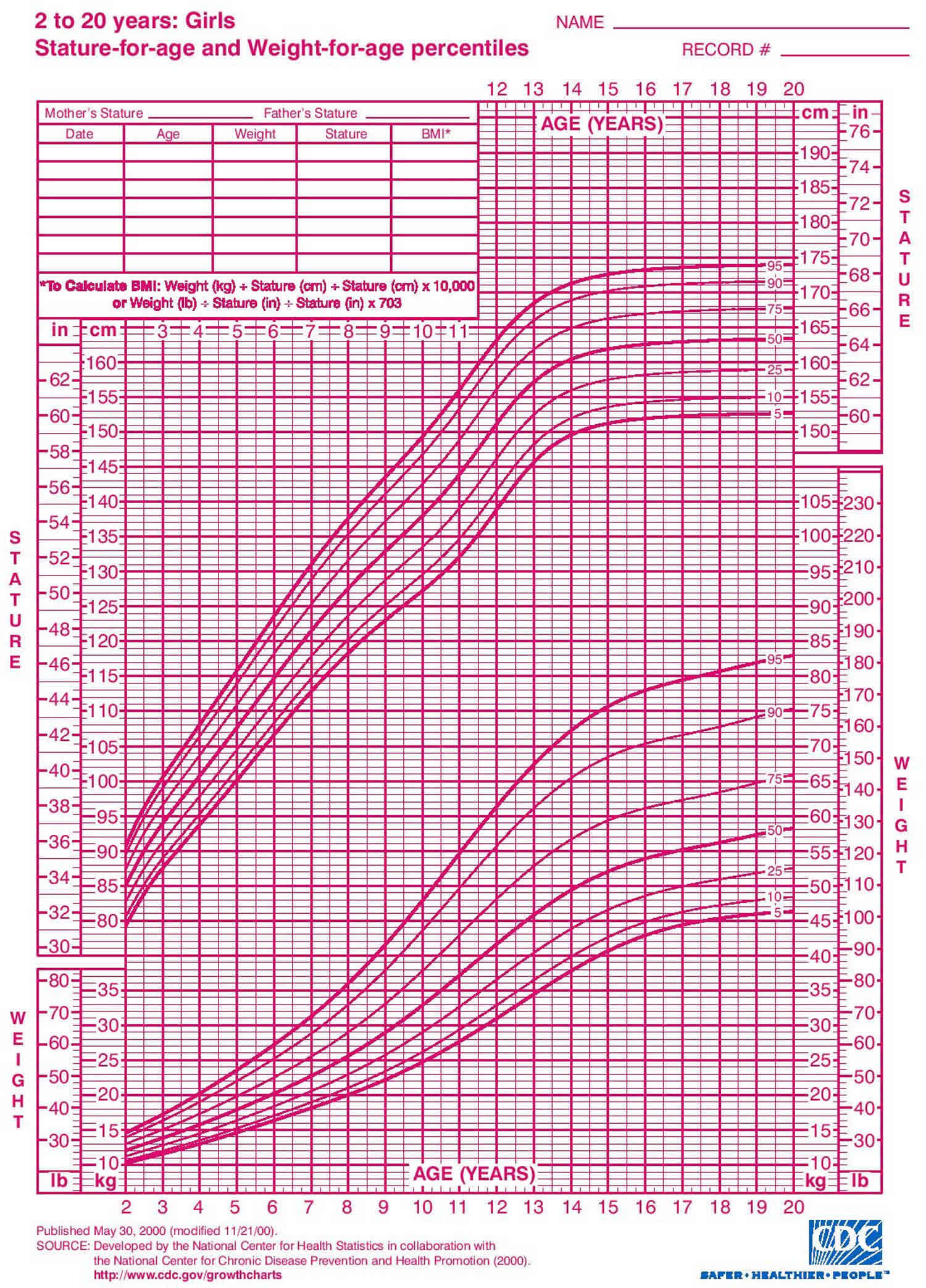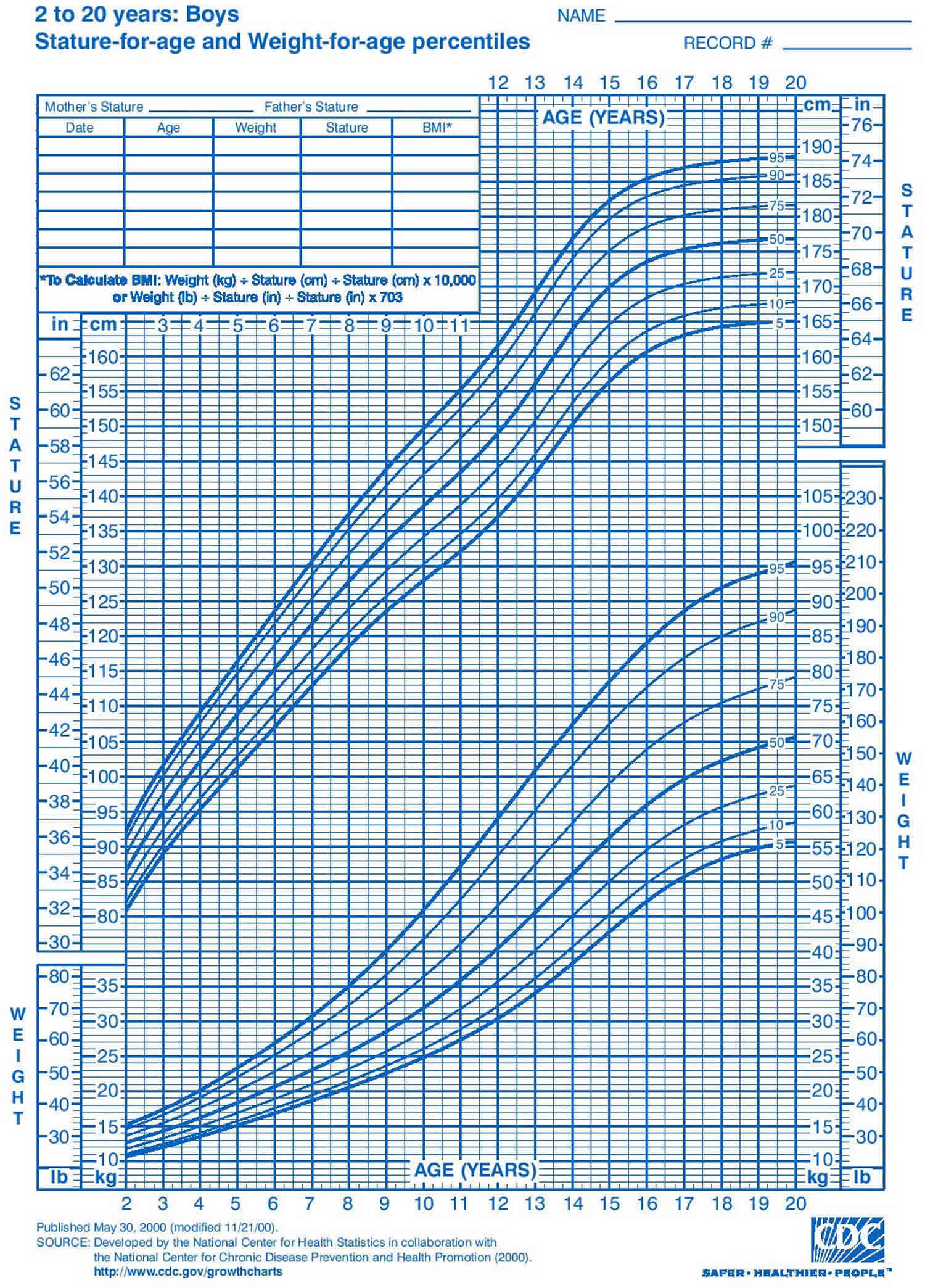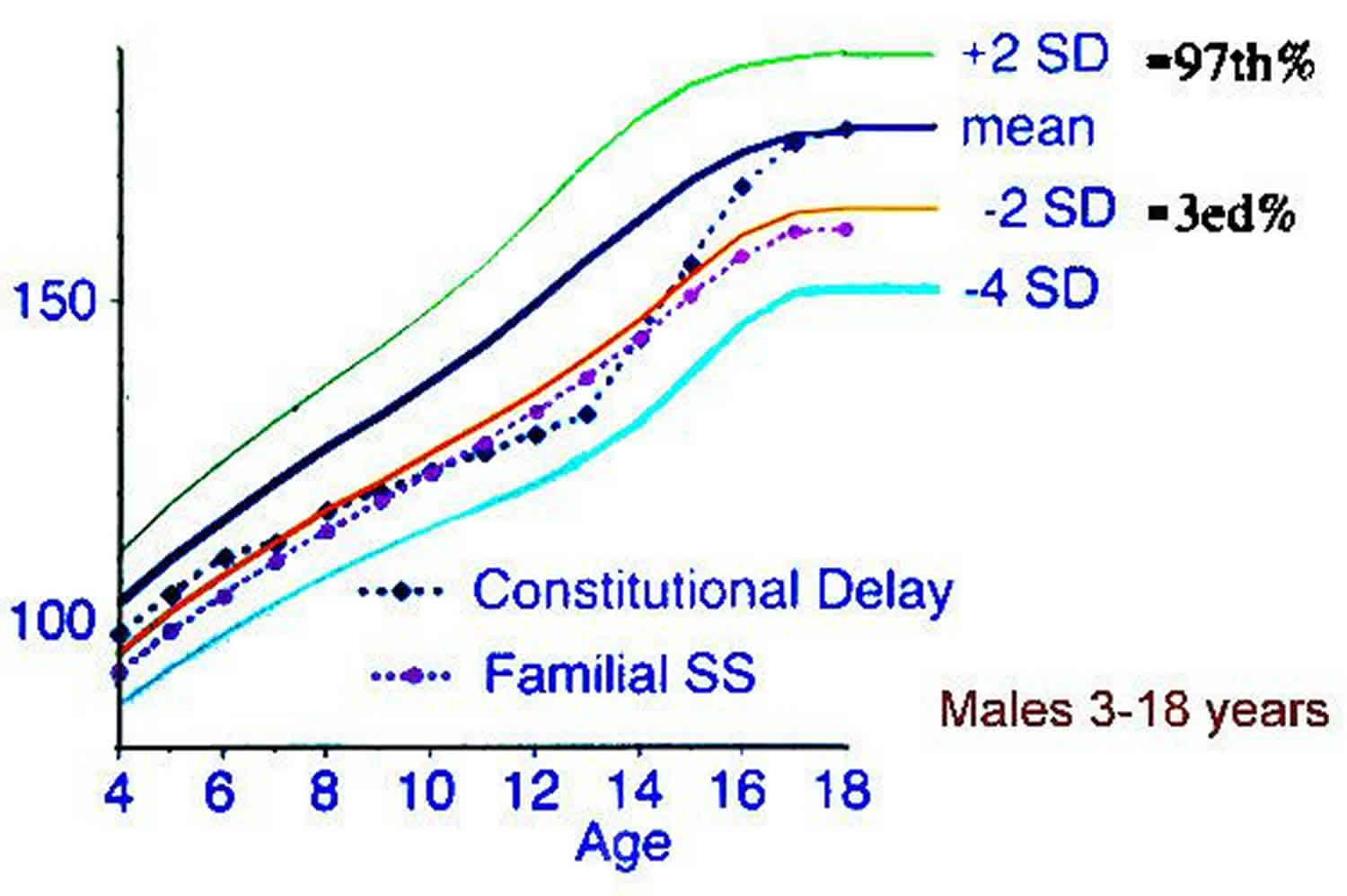Contents
What is short stature
A child who has short stature is much shorter than children who are the same age and sex.
Your health care provider will go over your child’s growth chart with you. A child with short stature’s height is:
- Two standard deviations (SD) or more below the average height for children of the same sex and age
- Below the 2.5 percentile on the growth chart: Out of 1,000 boys (or girls) who were born on the same day, 977 of the children are taller than your son or daughter 1
Short stature is one of the most common reasons for referral to a pediatric endocrinologist.
Most kids who are growing at or below the 5th percentile line on the growth chart are usually following one of these two normal variant growth patterns:
- Familial (genetic) short stature. These kids have inherited genes for short stature from their parents. Usually one or both parents, and often other relatives, are short. Although they are shorter than average, they grow at a normal rate and are otherwise healthy, showing no symptoms of medical problems that can affect growth. They generally enter puberty at an average age and reach a final adult height similar to that of their parents. In general, no treatment is recommended or known to be effective in significantly increasing their final adult height.
- Constitutional growth delay (delayed puberty). Although they are usually of average size in early infancy, these kids undergo a period of slower-than-average growth between 6 months and 2 years of age, causing them to fall lower on the growth chart. After about age 2 or 3 years, kids with constitutional growth delay will grow at a normal childhood rate until they reach puberty and undergo a growth spurt at a later age than most other teens. Because they start puberty later, they will continue to grow after most teens have stopped, thus “catching up” to their peers in final adult height. Usually, there’s a family history of this kind of growth pattern, and in general, there’s no need for treatment.
The hallmarks of familial short stature (genetic short stature) include bone age appropriate for chronologic age, normal growth velocity, and predicted adult height appropriate to the familial pattern. By contrast, constitutional growth delay (delayed puberty) is characterized by delayed bone age, normal growth velocity, and predicted adult height appropriate to the familial pattern (see Figure 3 below).
Your child’s doctor checks how your child is growing at regular checkups. Your child’s doctor will:
- Record your child’s height and weight on a growth chart.
- Monitor your child’s growth rate over time. Ask the provider what percentile your child is for height and weight.
- Compare your child’s height and weight to other children of the same age and sex.
- Talk with you if you are worried that your child is shorter than other children. If your child has short stature, this does not necessarily mean that something is wrong.
If your child is growing too slowly, your doctor might order tests to determine whether this is related to a medical or genetic condition that would interfere with growth.
Be sure to discuss any concerns you have about your child’s growth or development with your doctor.
How is “normal” growth defined?
Measured in height, “normal” growth is described as growth of:
- 0 to 12 months – about 10 inches. Growth during this phase is primarily a function of nutrition.
- 1 to 2 years – about 5 inches. From the age of 1, hormonal factors play an increasingly important role in your child’s growth.
- 2 to 3 years – about 3 1/2 inches a year
- 3 years to puberty – about 2 inches a year. There is minimal difference in growth seen in boys and girls until puberty, which results in an average height difference of 4 to 5 inches between the sexes.
Figure 1. Girls growth chart (2 to 20 years)

Figure 2. Boys growth chart (2 to 20 years)

Figure 3. Comparison of the growth patterns between idiopathic short stature and constitutional growth delay (male growth chart)

What are Percentiles?
Percentiles are measurements that show where a child is compared with others. On the growth charts, the percentiles are shown as lines drawn in curved patterns.
When doctors plot a child’s weight and height on the chart, they see which percentile line those measurements land on. The higher the percentile number, the bigger a child is compared with other kids of the same age and gender, whether it’s for height or weight; the lower the percentile number, the smaller the child is. For example, if a 4-year-old boy’s weight is in the 10th percentile, that means that 10% of boys that age weigh less than he does and 90% of 4-year-old boys weigh more.
How are Percentiles determined?
The Centers for Disease Control and Prevention (CDC) created the growth charts that are most commonly used in the United States. They were last updated in 2000. After collecting growth measurements from thousands of U.S. children over a period of time, the CDC was able to show the range of these measurements on one chart, using percentile curves.
Being in a high or a low percentile does not necessarily mean that a child is healthier or has a growth or weight problem. Let’s say that 4-year-old boy, who is in the 10th percentile for weight, is also in the 10th percentile for height. So 10% of kids are shorter and weigh less than he does, and most kids — 90% — are taller and weigh more. That just means that he’s smaller than average, which usually doesn’t mean there is a problem. If his parents and siblings are also smaller than average, and there are other signs that he’s healthy and developing well, doctors would likely conclude that there’s no cause for concern.
What’s the ideal percentile for my child?
There is no one ideal number. Healthy children come in all shapes and sizes, and a baby who is in the 5th percentile can be just as healthy as a baby who is in the 95th percentile.
Ideally, each child will follow along the same growth pattern over time, growing in height and gaining weight at the same rate, with the height and weight in proportion to one another. This means that usually a child stays on a certain percentile line on the growth curve. So if our 4-year-old boy on the 10th percentile line has always been on that line, he is continuing to grow along his pattern, which is a good sign.
If you have any questions about your child’s growth — or growth charts — talk with your doctor.
Short stature causes
There are many reasons why your child has short stature.
Most of the time, there is no medical cause for short stature (idiopathic short stature).
Your child may be small for her age, but is growing OK. She will probably start puberty later than her friends. Your child will most likely keep growing after most of her peers have stopped growing, and will probably be as tall as her parents. Providers call this “constitutional growth delay.”
If one or both parents are short, your child will most likely also be short. Your child should get as tall as one of her parents.
Sometimes, short stature may be a symptom of a medical condition.
Bone or skeletal disorders, such as:
- Rickets
- Achondroplasia
Long-term (chronic) diseases, such as:
- Asthma
- Celiac disease
- Congenital heart disease
- Cushing disease
- Diabetes
- Hypothyroidism
- Inflammatory bowel disease
- Juvenile rheumatoid arthritis
- Kidney disease
- Sickle cell anemia
- Thalassemia
Genetic conditions, such as:
- Down syndrome
- Noonan syndrome
- Russell-Silver syndrome
- Turner syndrome
- Williams syndrome
Other reasons include:
- Growth hormone deficiency
- Infections of the developing baby before birth
- Malnutrition
- Poor growth of a baby while in the womb (intrauterine growth restriction) or small for gestational age
This list does not include every possible cause of short stature.
Short stature diagnosis
Your child’s doctor (pediatrician) will perform a physical exam. Your child’s doctor will measure your child’s height, weight, and arm and leg lengths.
To figure out possible causes of your child’s short stature, the provider will ask about your child’s history.
If your child’s short stature may be due to a medical condition, your child will need lab tests and x-rays.
Bone age x-rays are most often taken of the left wrist or hand. The provider looks at the x-ray to see if the size and shape of your child’s bones have grown normally. If the bones have not grown as expected for your child’s age, the provider will talk more about why your child may not be growing normally.
Your child may have other tests if another medical condition may be involved, including:
- Complete blood count
- Growth hormone stimulation
- Thyroid function tests
- Insulin growth factor-1 (IGF-1) level
- Blood tests to look for liver, kidney, thyroid, immune system, and other medical problems
Your child’s doctor keeps records of your child’s height and weight. Keep your own records, too. Bring these records to your child’s doctor attention if the growth seems slow or your child seems small.
Short stature treatment
Your child’s short stature may affect his/her self-esteem.
- Check in with your child about relationships with friends and classmates. Kids tease each other about many things, including height.
- Give your child emotional support.
- Help family, friends, and teachers emphasize your child’s skills and strengths.
Growth hormone injections
If your child has no or low levels of growth hormone, your child’s doctor may talk about treatment with growth hormone injections.
Most children have normal growth hormone levels and will not need growth hormone injections. Recombinant human growth hormone (rhGH) administration has not been proven to remarkably improve final adult height in children with normal variant short stature 2. Published clinical studies that have focused on this particular issue have been inconclusive 3.
If your child is a boy with short stature and delayed puberty, your child’s doctor may talk about using testosterone injections to jump-start growth. But this is not likely to increase adult height.
- [Guideline] Cohen P, Rogol AD, Deal CL, et al. Consensus statement on the diagnosis and treatment of children with idiopathic short stature: a summary of the Growth Hormone Research Society, the Lawson Wilkins Pediatric Endocrine Society, and the European Society for Paediatric Endocrinology Workshop. J Clin Endocrinol Metab. 2008 Nov. 93(11):4210-7.[↩]
- Albertsson-Wikland K, Aronson AS, Gustafsson J, et al. Dose-dependent effect of growth hormone on final height in children with short stature without growth hormone deficiency. J Clin Endocrinol Metab. 2008 Nov. 93(11):4342-50.[↩]
- Short Stature. https://emedicine.medscape.com/article/924411-overview[↩]





